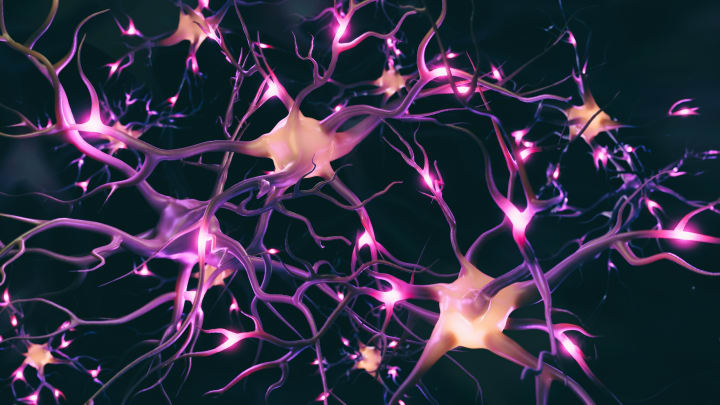The Science Behind ADHD and Why You Are Not Lazy
A Brief Overview to Understanding the Impact of ADHD on Development, Brain Function and Everyday Life

ADHD is a highly complex developmental disorder, starting in childhood and persisting into adulthood, severely impacting the lives of the individuals affected. With one in 25 adults living with the disorder, chances are high that it affects one of your colleagues, friends, family members or maybe even yourself. In order to reduce the stigmatization of mental illnesses in general and ADHD in particular, it is important to educate the general public about the particularities of the disorder. For people who are not familiar with ADHD, the typical behavior of affected individuals cannot be distinguished from undesirable habits such as laziness and procrastination, which is often fatal for those affected in the form of unfair treatment and significant disadvantages on their career path. The following article aims to provide a good overview of ADHD, with a particular focus on the day-to-day difficulties experienced by affected individuals and the underlying neuronal characteristics of the disorder.
What is ADHD?
ADHD is a heterogeneous, genetically determined, multifactorial disorder of neuronal development with an early onset, which is characterized by the three main symptom areas of hyperactivity, impulsivity and inattention (Biedermann, 2005; Holthe, 2013). Behavioral problems associated with ADHD usually become apparent before the age of seven and are fairly stable over the course of development, with symptoms of hyperactivity tending to decrease over time in contrast to inattention (Hinshaw, Owens, Sami & Fargeon, 2006; Barkley, 1997). Depending on the predominant symptoms, a classification into subtypes is made, with a lifetime prevalence of 4% for ADHD-I (predominantly inattentive), 2.2% for ADHD-HI (predominantly hyperactive) and 3.7% ADHD-C (combined type) (Staller & Faraone, 2006). There are differences in the prevalence of ADHD between different ethnic groups, depending on the cultural acceptance of the symptoms. Compared to white populations, the prevalence of ADHD is significantly higher among African-Americans, as the symptoms are generally less accepted there (Reid et al. 1998, 2000).
In addition to the main symptom areas, the disorder is characterized above all by a lack of response inhibition, executive dysfunction and low reward sensitivity (Holthe, 2013). Response inhibition is understood as the ability to suppress impulses and set appropriate priorities in order to consistently pursue one’s own goals, which is usually possible without any problems from the age of three to four (Barkley, 1997). All cognitive functions involved in this goal-oriented behavior are referred to as executive functions and can only be used accordingly if impulse control is intact. The weakness of executive functions that occurs in the context of ADHD manifests itself in the form of disorganization, time management problems, procrastination, deficits in working and short-term memory, difficulties in emotion regulation and in initiating tasks (Holthe, 2013). ADHD is rarely present as a single diagnosis; around 70–75% of those affected, fulfill the criteria for at least one other psychiatric disorder, such as depression, anxiety disorders, obsessive-compulsive disorders, substance use disorders, tics or Tourette’s syndrome (Quinn, 2005, 2008).
Overall, there are a number of risk factors that are involved in the development and persistence of the disorder. The heritability of ADHD is around 77% and a family history of the disorder also increases the likelihood of persistent symptoms (Biederman, 2005). ADHD diagnoses are also more likely in families characterized by persistent conflict behavior, low cohesion, poor living conditions, low income and other existing psychiatric problems, especially on the part of the mother (Biederman et al., 1995; Scahill, Schwab-Stone, Merikangas, Leckman, Zhang & Kasl, 1999). Regardless of genetics, the risk for ADHD is increased by maternal alcohol and nicotine use during pregnancy, low birth weight and birth complications, neurological damage, delayed myelination of neural pathways in the brain, and prenatal exposure to lead and chemicals (Armstrong, 1996; Biederman, 2005).
Limitations in everyday functioning
Studies of adult ADHD sufferers diagnosed in childhood show that ADHD in adulthood increases the risk of poor academic and occupational performance, divorce, low self-esteem and low socioeconomic status (Rucklidge & Kaplan, 1997). Inattention, in contrast to hyperactivity, appears to contribute more to academic failure (Pingault, Tremblay, Vitaro, Carbonneau, Genolini & Côté, 2011). To make matters worse, around 70% of children with ADHD also have a learning disorder, such as dyslexia (Mayes, Calhoun & Crowell, 2000). In most cases, affected children are aware that they are unable to meet their own or their parents’ expectations in terms of academic achievement and attribute this perceived failure to the ADHD diagnosis, which also leads to lower self-esteem (Davis-Berman & Pestello, 2010). In addition to poorer career opportunities, ADHD increases the likelihood of developing lasting psychiatric, social and relationship problems, especially if the disorder initially goes undetected (Goodman, 2007). Both men and women have a higher risk of becoming unable to work in middle adulthood (Mordre, Groholt, Sandstad & Myhre, 2012).

Adolescents with ADHD also often have poorer relationships with their peers and parents, exhibit more criminal behavior and excessive substance use. Typical comorbidities in children with ADHD are oppositional defiant behavior, social behavior disorder, affective disorders, anxiety and learning disorders, while in adults anxiety disorders with a prevalence of 50% are in the foreground as well as affective disorders and substance use disorders (Biederman, 2005). In addition, adults with ADHD are around five times more likely to commit suicide than the general population (Barbaresi, Colligan, Weaver, Voigt, Killian & Katusic, 2013).
Neuronal and developmental characteristics of ADHD
Neurologically, dysfunctions and reduced metabolic activity in the frontostriatal regions of the brain, which are mainly responsible for executive functions, as well as deficits in connectivity to important subcortical regions underlie ADHD symptoms (Biedermann, 2005; Nussbaum, 2012; Zametkin et al., 1990). Compared to control subjects, children with ADHD show differences in the structure and size of the cerebellum and the frontal brain regions, with the size of the brain in female ADHD sufferers also correlating with different ratings of symptom severity (Berquin et al., 1998; Castellanos et al., 2001; Hynd, Semrud-Clikeman, Lorys, Novey & Eliopulos, 1990).

ADHD also appears to involve a disruption in the brain’s dopaminergic and noradrenergic pathways. This dysfunction of the reward and motivation circuits in the brain makes it difficult for those affected to engage in boring, repetitive tasks or tasks that offer no direct reward. In contrast, a high level of concentration can be achieved when the task is particularly interesting or the person is under high pressure. This context dependency often makes it difficult for outsiders to understand the disorder (Holthe, 2013). Cognitive functioning can be improved by stimulants such as methylphenidate by preventing the reuptake of dopamine and noradrenaline into the presynaptic nerve cell, which leads to an improvement in symptoms in around 75% of affected children (Connor, 2006; Nussbaum, 2012).
Important things to remember
- Definition and symptoms: ADHD is a genetically determined neurodevelopmental disorder characterized by hyperactivity, impulsivity and inattention.
- Executive dysfunction and comorbidities: In addition to the main symptoms, people with ADHD show weak response inhibition, executive dysfunction and low reward sensitivity. Around 70–75% also meet the criteria for at least one more psychiatric disorder.
- Risk factors and heritability: Risk factors for development and persistence of the disorder include neurological damage, maternal substance use during pregnancy and family conflict. But with a heritability of 77%, the disorder is highly genetically determined.
- Neurological features: ADHD is associated with dysfunction and decreased metabolic activity in frontostriatal brain regions responsible for executive functions, as well as deficits in connectivity to key subcortical regions.
- Effects on later life: ADHD can lead to poor academic and occupational performance, low socioeconomic status, increased risk of psychiatric problems and a higher suicide rate in adulthood. Inattention contributes more to academic failure than hyperactivity.
✨ Thank you so much for reading! If you enjoy my content, please consider liking, subscribing or leaving a little tip to support my work. Hope to see you here again soon. ✨
- This story was originally published on my Medium account -






Comments
There are no comments for this story
Be the first to respond and start the conversation.